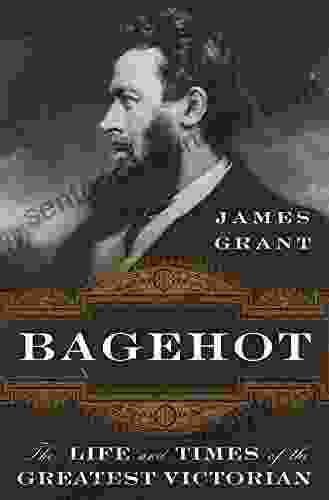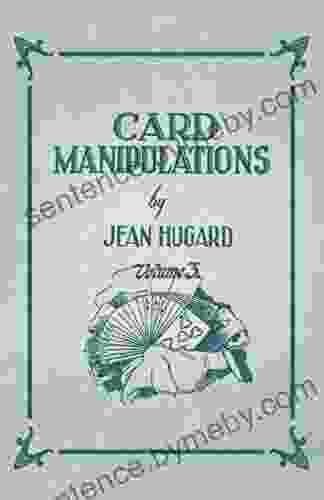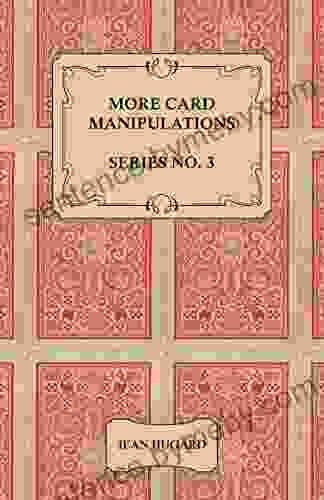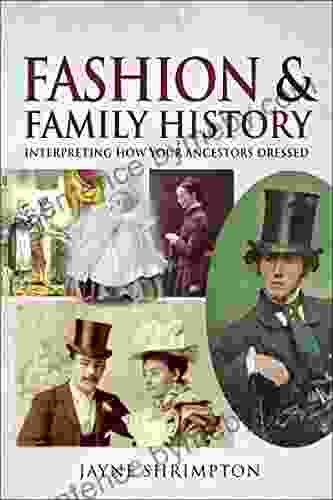Interpreting How Your Ancestors Dressed: Tracing Your Ancestors Through Clothing

Our ancestors' clothing can tell us a rich story about their lives, their culture, and their place in history. By interpreting the styles, fabrics, and accessories they wore, we can gain insights into their social status, their occupation, their personal tastes, and even their religious beliefs.
4.8 out of 5
| Language | : | English |
| File size | : | 24269 KB |
| Text-to-Speech | : | Enabled |
| Screen Reader | : | Supported |
| Enhanced typesetting | : | Enabled |
| Word Wise | : | Enabled |
| Print length | : | 329 pages |
| Lending | : | Enabled |
Styles
The style of clothing that your ancestors wore can tell you a lot about their social status. For example, wealthy people often wore clothing made from expensive fabrics, such as silk or velvet. They also tended to wear clothing that was elaborate and ornate. Poor people, on the other hand, often wore clothing made from simple, durable fabrics, such as wool or linen. Their clothing was also more likely to be plain and unadorned.
The style of clothing that your ancestors wore can also tell you about their occupation. For example, farmers often wore clothing that was designed to protect them from the elements. They also tended to wear clothing that was loose and comfortable, so that they could move around easily. Soldiers, on the other hand, often wore clothing that was designed to protect them in battle. They also tended to wear clothing that was brightly colored, so that they could be easily seen on the battlefield.
The style of clothing that your ancestors wore can also tell you about their personal tastes. For example, some people preferred to wear clothing that was fashionable. They often followed the latest trends and wore clothing that was considered to be stylish. Other people preferred to wear clothing that was more comfortable. They often wore clothing that was loose and made from soft fabrics.
Fabrics
The fabric that your ancestors wore can also tell you a lot about their lives. For example, wealthy people often wore clothing made from expensive fabrics, such as silk or velvet. These fabrics were soft, luxurious, and comfortable to wear. Poor people, on the other hand, often wore clothing made from simple, durable fabrics, such as wool or linen. These fabrics were less comfortable to wear, but they were more affordable and easier to care for.
The fabric that your ancestors wore can also tell you about their occupation. For example, farmers often wore clothing made from wool or linen. These fabrics were durable and could withstand the rigors of farm work. Soldiers, on the other hand, often wore clothing made from leather or metal. These fabrics were more protective and could help to keep soldiers safe in battle.
Accessories
The accessories that your ancestors wore can also tell you a lot about their lives. For example, wealthy people often wore jewelry made from gold or silver. They also tended to wear accessories that were elaborate and ornate. Poor people, on the other hand, often wore jewelry made from less expensive materials, such as copper or brass. They also tended to wear accessories that were more simple and unadorned.
The accessories that your ancestors wore can also tell you about their occupation. For example, farmers often wore hats to protect them from the sun and the rain. They also tended to wear gloves to protect their hands from the cold. Soldiers, on the other hand, often wore helmets to protect their heads from injury. They also tended to wear boots to protect their feet from the elements.
The accessories that your ancestors wore can also tell you about their personal tastes. For example, some people preferred to wear jewelry that was fashionable. They often wore jewelry that was made from the latest materials and that was considered to be stylish. Other people preferred to wear jewelry that was more meaningful. They often wore jewelry that had sentimental value or that represented their religious beliefs.
Tracing Your Ancestors
If you're interested in learning more about your ancestors, one of the best places to start is by looking at their clothing. By interpreting the styles, fabrics, and accessories that they wore, you can gain insights into their social status, their occupation, their personal tastes, and even their religious beliefs.
To get started, gather as much information as you can about your ancestors. This may include old photographs, letters, diaries, or other documents. You can also talk to your family members and see if they have any information about your ancestors' clothing.
Once you have gathered some information about your ancestors, start by looking at the styles of clothing that they wore. What fabrics were used? What colors were popular? What types of accessories were worn? By answering these questions, you can start to build a picture of your ancestors' lives.
Tracing your ancestors through clothing can be a fascinating and rewarding experience. It's a great way to learn more about your family history and to connect with your ancestors on a personal level.
Our ancestors' clothing can tell us a rich story about their lives, their culture, and their place in history. By interpreting the styles, fabrics, and accessories they wore, we can gain insights into their social status, their occupation, their personal tastes, and even their religious beliefs. So next time you're looking through old family photos, take a close look at what your ancestors are wearing. You may be surprised at what you learn.
4.8 out of 5
| Language | : | English |
| File size | : | 24269 KB |
| Text-to-Speech | : | Enabled |
| Screen Reader | : | Supported |
| Enhanced typesetting | : | Enabled |
| Word Wise | : | Enabled |
| Print length | : | 329 pages |
| Lending | : | Enabled |
Do you want to contribute by writing guest posts on this blog?
Please contact us and send us a resume of previous articles that you have written.
 Book
Book Novel
Novel Page
Page Chapter
Chapter Text
Text Story
Story Genre
Genre Reader
Reader Library
Library Paperback
Paperback E-book
E-book Magazine
Magazine Newspaper
Newspaper Paragraph
Paragraph Sentence
Sentence Bookmark
Bookmark Shelf
Shelf Glossary
Glossary Bibliography
Bibliography Foreword
Foreword Preface
Preface Synopsis
Synopsis Annotation
Annotation Footnote
Footnote Manuscript
Manuscript Scroll
Scroll Codex
Codex Tome
Tome Bestseller
Bestseller Classics
Classics Library card
Library card Narrative
Narrative Biography
Biography Autobiography
Autobiography Memoir
Memoir Reference
Reference Encyclopedia
Encyclopedia Martin E P Seligman
Martin E P Seligman James Syhabout
James Syhabout Jane Drake Brody
Jane Drake Brody Jannah Firdaus Mediapro
Jannah Firdaus Mediapro Marni Helene Nispel
Marni Helene Nispel Jane Dailey
Jane Dailey Jason Dukes
Jason Dukes Rich Bond
Rich Bond Marie W Lawrence
Marie W Lawrence James J Downes
James J Downes James M Cypher
James M Cypher Pure Awesome Press
Pure Awesome Press Jane E Miller
Jane E Miller Peter Lacy
Peter Lacy Silvan S Schweber
Silvan S Schweber Jarl Jensen
Jarl Jensen Jane Springer
Jane Springer James O Reilly
James O Reilly Jane Kohuth
Jane Kohuth Leil Lowndes
Leil Lowndes
Light bulbAdvertise smarter! Our strategic ad space ensures maximum exposure. Reserve your spot today!

 Garrett PowellUnder the Dome Walks with Paul Celan: A Journey Through Memory, Trauma, and...
Garrett PowellUnder the Dome Walks with Paul Celan: A Journey Through Memory, Trauma, and...
 Ralph EllisonThe Life and Times of the Greatest Victorian: An Unforgettable Journey into...
Ralph EllisonThe Life and Times of the Greatest Victorian: An Unforgettable Journey into...
 Ismael HayesUnravel the Unravel the Taut Web of Mystery with "Violets Are Blue: An Alex...
Ismael HayesUnravel the Unravel the Taut Web of Mystery with "Violets Are Blue: An Alex... Felix HayesFollow ·14.3k
Felix HayesFollow ·14.3k Charlie ScottFollow ·11.4k
Charlie ScottFollow ·11.4k Charles BukowskiFollow ·11.3k
Charles BukowskiFollow ·11.3k Earl WilliamsFollow ·18.3k
Earl WilliamsFollow ·18.3k Jayson PowellFollow ·12.3k
Jayson PowellFollow ·12.3k Virginia WoolfFollow ·9.3k
Virginia WoolfFollow ·9.3k Elliott CarterFollow ·14.1k
Elliott CarterFollow ·14.1k Ben HayesFollow ·7.9k
Ben HayesFollow ·7.9k

 Franklin Bell
Franklin BellHow Businesses Can Thrive In The New Global Neighborhoods
The world is becoming...

 Rob Foster
Rob FosterCard Manipulations Volume 1: A Masterclass in Deception...
Unveiling the...

 Enrique Blair
Enrique BlairUnveil the Secrets of Card Manipulation: Dive into "More...
Step into the captivating world...

 Jamal Blair
Jamal BlairComedy Fillers 200 Quips One Liners Jean Hugard
Unlock the Secrets of...

 Chase Simmons
Chase SimmonsUnlock Financial Independence: A Comprehensive Guide to...
In a world where financial security seems...

 Dion Reed
Dion ReedUnveiling Global Market Entry Strategies: A Comprehensive...
Global Market Entry Strategies:...
4.8 out of 5
| Language | : | English |
| File size | : | 24269 KB |
| Text-to-Speech | : | Enabled |
| Screen Reader | : | Supported |
| Enhanced typesetting | : | Enabled |
| Word Wise | : | Enabled |
| Print length | : | 329 pages |
| Lending | : | Enabled |






